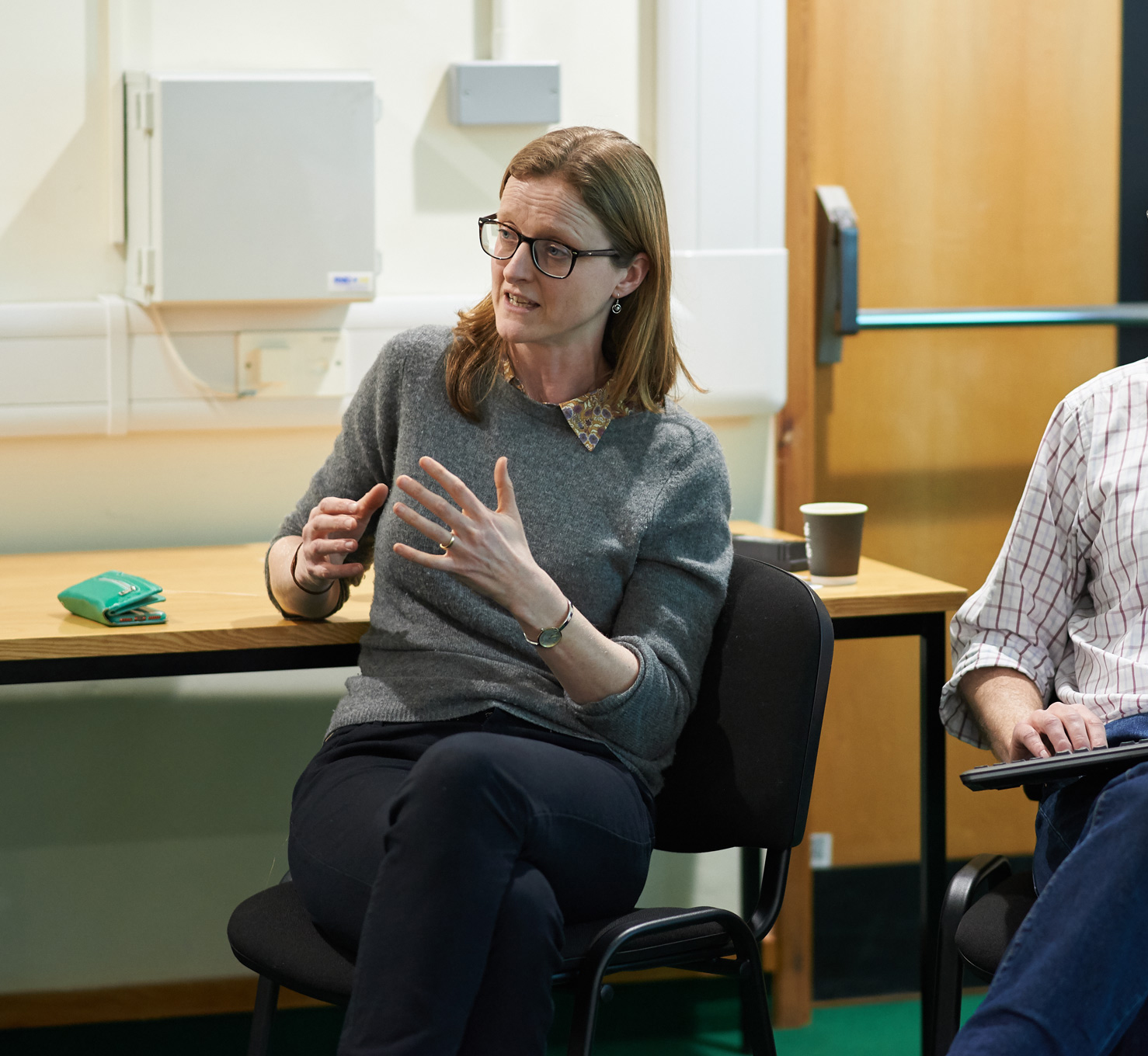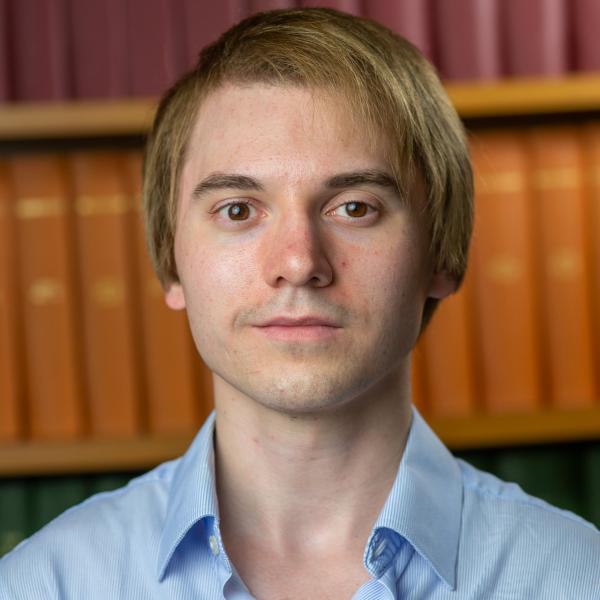
We are pleased to welcome Kei Landin to the Unit as a visiting student. Kei joins the Denison Group and Stagg Group, and will be working to develop novel applications of virtual reality and augmented reality technology in clinical medicine and neuroscience.
Kei is currently pursuing a M.Sci. (hons) degree in Neuroscience at King’s College London. Prior to joining the Unit, Kei has worked as a research student at multiple institutions, including the University of Cambridge, the Karolinska Institute, the Swedish Museum of Natural History, the University of Gothenburg, and the Royal Swedish Academy of Sciences.
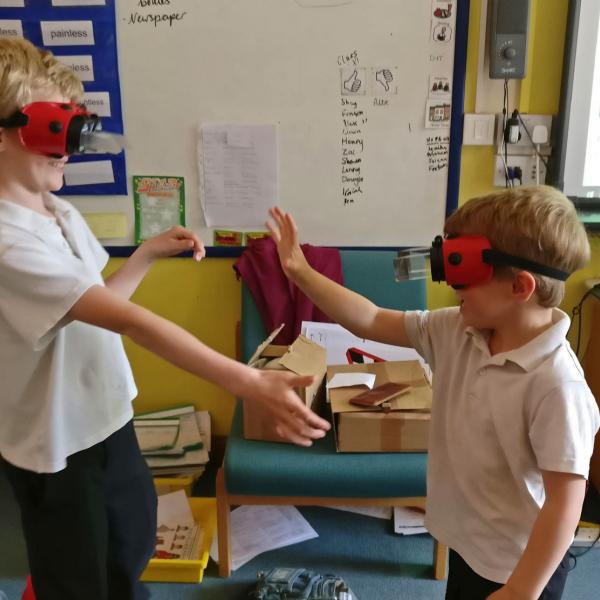
Unit Research Support Manager Ben Micklem recently made a return visit to St. Nicholas' Primary School to run two after-school Science Club sessions.
The first session covered sight and optical illusions. After introducing the eye and its connection to the brain, Ben used the famous selective attention test video, where even an unusual sight can be overlooked by people concentrating on a counting task, to illustrate that the brain has a bigger part in 'seeing' than they expected.
To showcase the brain's ability to adapt to changing visual feedback, the children tried on 'reversing goggles', part of the Unit's Public Engagement 'Toolbox'. These goggles flip the image entering the eye, either vertically or horizontally. At first, the children found it challenging to achieve tasks like shaking hands with another goggle-wearer, but after time and practice, their brains adapted and the tasks became much easier for them.
The 7- to 9-year-olds were also guided to find their own blind-spots, and discovered how their brains could fill-in a gap in a line when the gap aligns with their blind-spot. The children engaged in discussions about why their brains were being fooled by the optical illusions on the worksheet (PDF available for download). They were introduced to the Ames Room illusion by a Royal Institution video, and they were all given printed templates to make their own.
The second session dealt with illusions to the sense of touch, and introduced proprioception. Some of the activites were taken from the Royal Institution's 'Baffling Body Illusions' workshop, including the use of a stuffed glove in front of the child as a fake hand, while their real hand stayed behind a wall. When both the fake hand and real hand were touched, there was the illusion that the fake hand was feeling the touch. Another popular demonstration involved the illusion of a '6th finger', when a mirror is used to give the child a view of two hands (actually one of their hands, and a mirror image of it), and the fingers on the hidden hand are counted in time with the visible hand.

We are pleased to welcome Cristina Maria Velasquez-Cobos to the Dupret Group for a period of advanced research as part of her BBSRC Interdisciplinary Bioscience Doctoral Training Programme at the University of Oxford.
During Cristina’s time in the Unit, she will work closely with Dr Laura Lefevre and Dr Vitor Lopes-dos-Santos to learn about hippocampal network activity during sleep and memory-guided behaviour.

We are pleased to welcome Joshua Keeling for his Final Honours School research project in the Dupret Group. Josh is currently studying for his B.A. in Biomedical Sciences at the University of Oxford.
During Josh’s time in the Unit, he will work closely with Dr Mohamady El-Gaby to learn about hippocampal representations of salient locations and the role of plastic synapses in generating such representations.
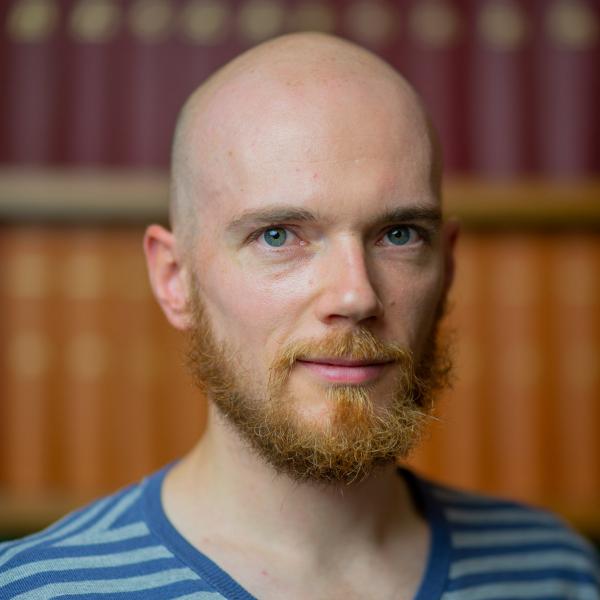
We are pleased to welcome Dr Germain Lefebvre to the Unit as a Postdoctoral Neuroscientist in the Bogacz Group.
Germain originally graduated from the University of Lille, France, with a Bachelor's degree in Psychology. He then went on to complete a Master’s degree in Economics & Psychology at Paris I and Paris V Universities, followed by a Ph.D. in Economics at Paris II University. Germain has wide interests in the research field of decision making, with most of his research falling between computational neuroscience and behavioural economics. During his doctoral and postdoctoral research, he investigated the learning mechanisms underlying the adoption of speculative behaviours together with those underlying the confirmation bias at the computational and neural level.
Here in the Unit, Germain’s research will be focused on the computational underpinnings of the confirmation bias, in extended learning environments.
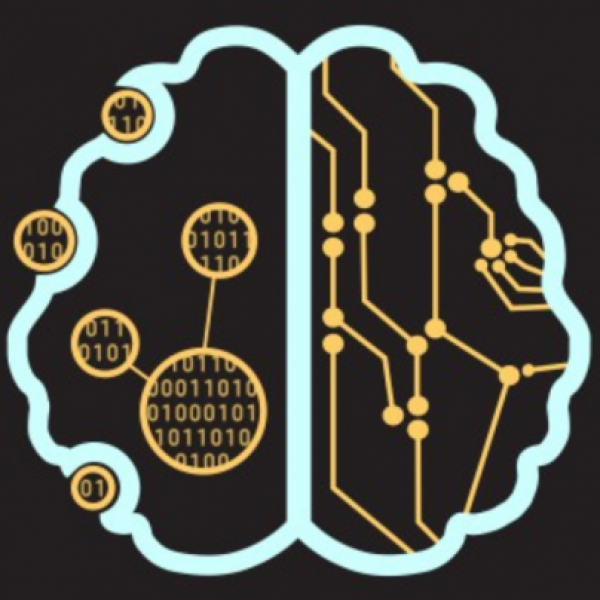
Unit Group Leader Rafal Bogacz was recently interviewed for a podcast at Brain Inspired, an online platform showcasing the convergence of neuroscience and artificial intelligence (A.I.).
During the interview, Rafal discusses with Dr Paul Middlebooks various ways in which the brain may approximate an efficient learning algorithm used by artificial neural networks. They also discuss the free-energy principle and its implications for understanding the brain.

We are pleased to welcome Dr. Dan Piña Fuentes to Peter Brown’s Group as a visiting student for a period of advanced research.
During Dan’s time in the Unit, he will pursue studies related to his Ph.D. project that is focused on testing the efficacy of adaptive Deep Brain Stimulation (aDBS) in Parkinson’s disease. In addition, Dan will be exploring the possibility of applying aDBS to dystonia.
Dan obtained his medical degree in 2015 from the National Autonomous University of Mexico. He was then awarded a national grant (CONACyT) to pursue a doctoral degree at the University of Groningen, The Netherlands. Dan has been carrying out his Ph.D. project in the Department of Neurosurgery of the University Medical Centre Groningen.

One of the Unit’s new online resources supporting open research, the CHAMBER project, recently won a prize at the annual BRAINScapes competition, a local initiative celebrating the best images in neuroscience from across the University. The prize-winning entry, “A vivid look at the mouse brain”, provided a beautiful showcase of the imaging data that are being shared freely on CHAMBER by Unit researchers.
CHAMBER, or ‘CHemoarchitectonic Atlas of the Mouse thalamus as a BNDU opEn Resource’, is a novel collection of high-resolution images of protein expression (immunoreactivity) in brain tissue sections. The resource is designed to facilitate the empirical definition of mouse brain regions and their constituent cell types, particularly those in the thalamus. CHAMBER offers a ‘Google Maps-like experience’ for interrogating the images, which are linked to stereotaxic coordinates to aid interpretation and practical use. The first phase of the CHAMBER project is live and can readily accessed as part of the Unit’s Data Sharing Platform.
The CHAMBER project is a collaboration between the Magill Group, Sharott Group and the Unit’s Research Support Manager Ben Micklem.
Dr Kouichi Nakamura, co-founder of CHAMBER, commented “We are delighted that the quality of the images, and our commitment to sharing them openly, have been recognised in this way. CHAMBER is still at an early stage of its development, but its potential and value are clear, and we look forward to adding new images and functionality in time.”

The Unit held its annual Training & Careers Development Event on Friday 29th March. Unit members and Oxford colleagues were treated to a range of enlightening presentations from expert speakers, each of which was accompanied by an engaging Q & A session.
Dr Paul Ashley, Head of Licensing and Ventures (Life Sciences) at Oxford University Innovation, gave the opening presentation and some valuable guidance on intellectual property and technology transfer in an academic setting. This was followed by a talk from Joe Edwards, Public Affairs Adviser at The Royal Society, in which he recounted the importance of linking research(ers) to scientific and health policy as well as some impactful ways and means to engage in it. Dr Rosemary Painter, Unit I.T. Officer, then gave some timely reminders of best practice in I.T. and data security. Unit Research Support Manager Ben Micklem completed the general session by reiterating progress made with the Unit’s new Data Sharing Platform, laying down a challenge to the audience to help craft its content and functionality.
In the first of two break-out workshops held after refreshments, Dr Rebecca Wright, Senior Editor of the journal Nature Neuroscience, narrated her career trajectory and gave her perspective on working in the academic publishing industry. This was supplemented with some well-received advice on transitioning from research to scientific editor roles. In the second workshop, Professor Heidi Johansen-Berg, Director of the Wellcome Centre for Integrative Neuroimaging at the University of Oxford, led an interactive discussion of strategies for enhancing academic profiles beyond publishing scientific papers.
Peter Magill, Chair of the Unit’s Research Training & Career Development Committee, commented “The delivery of specialised training and career support is a strategic priority for the MRC BNDU. Thanks to our guest speakers, we are well positioned to sustain and grow the Unit’s world-class infrastructure for research and innovation.”

Last week, Unit members gathered to bid a fond farewell to Lauren Waite as she leaves the Unit to start her Ph.D. studies in behavioural neuroscience at The University of Nottingham.
Lauren has been working as a Research Technician as part of the Sharott Group and Magill Group, where she has provided specialist scientific support for numerous projects, including the neural basis of movement difficulties in experimental Parkinsonism.
Lauren’s mentor, Dr Andy Sharott, commented “It has been a pleasure to work with Lauren over the last year. She is a valued member of the team, contributing greatly to projects across the lab. While we're sorry to Lauren go, we are nevertheless delighted to have played a part in her training and career development, and we wish her every success in her Ph.D. project. We look forward to following Lauren’s future career.”



